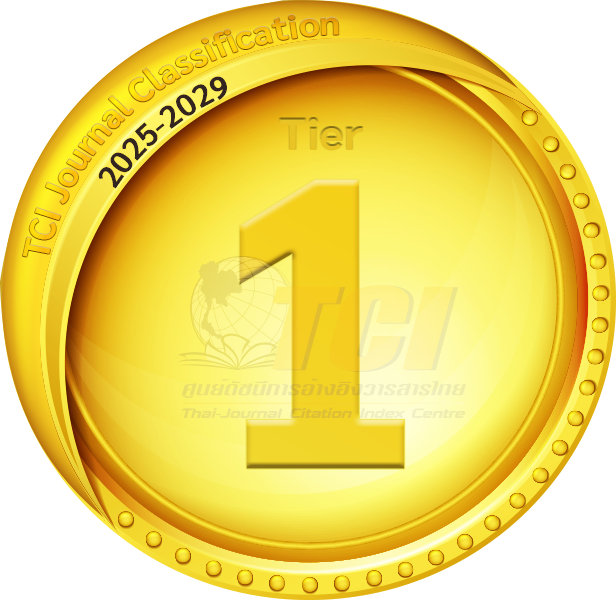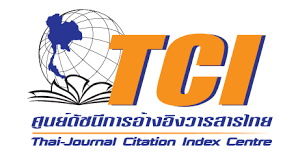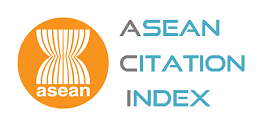Understanding the Pali Canon through Keyword Analysis: A Comparison between Different Reference Corpora
- Chirawan Sukwitthayakul, Faculty of Liberal Arts, Thammasat University, Bangkok, Thailand
- Saneh Thongrin, Faculty of Liberal Arts, Thammasat University, Bangkok, Thailand, *Corresponding author, Email: saneh.t@arts.tu.ac.th
Abstract
This study was to conduct keyword analyses on the English Pali Canon and compare keywords generated by four different reference corpora which varied in genre and size. The software AntConc 3.5.9 was employed for analyzing and generating the keyword lists. Two node corpora were compiled using samples from two English translations of the Pali Canon and the reference corpora were the node corpora themselves, a collection of other religions’ canons, the Manually Annotated Sub-Corpus (MASC), and the British National Corpus (BNC). It was found that the numbers of keywords were the highest when BNC, which was the largest and more general, was used as the reference corpus. The results were compared to select the keywords that recurred at the top of most, if not all, keyword lists. It can be seen that, regardless of the reference corpora, most of the top keywords were nouns referring to people or characters in the Pali Canon, such as the Exalted One, brethren, Gotama, and Ânanda as these names and words were not frequently found in other texts. The comparison of reference corpora can help researchers find the most appropriate reference corpus and ensure the selection of keywords in the creation of a Buddhist wordlist for further research.
Keywords: Keyword Analysis, the Pali Canon, Corpus Analysis, English for Specific Purposes, Digha Nikaya
References
Abeed, M. (2017). News representation in times of conflict: A corpusbased critical stylistic analysis of the Libyan revolution (Doctoral dissertation). University of Huddersfield Repository, UK.
Alsaawi, A. (2022). The use of language and religion from a sociolinguistic perspective. Journal of Asian Pacific Communication, 32(2), 236-253. https://doi.org/10.1075/japc.00039.als
Anthony, L. (2020). AntConc (Version 3.5.9). Retrived form https://www.laurenceanthony.net/software
Brookes, G., & McEnery, A. (2019). Corpus linguistics for indexing. The Indexer: The International Journal of Indexing, 37(2), 105-124. https://doi.org/10.3828/indexer.2019.16
Campoy, M. C., Cubillo, M. C. C., Belles-Fortuno, B., & Gea-Valor, M. L. (2010). Corpus-based approaches to English language teaching. London, UK: Continuum.
Crystal, D. (1992). An encyclopedic dictionary of language and languages. Oxford, UK: Blackwell.
Dazdarevic, S. (2012). English for religious purposes. Teaching foreign languages for special purposes, University of Foreigners of Perugia, Perugia, Italy.
Geluso, J., & Hirch, R. (2019). The reference corpus matters: Comparing the effect of different reference corpora on keyword analysis. Computer Science, 1(2), 209-242. https://doi.org/10.1075/rs.18001.gel
Goh, G. Y. (2011). Choosing a reference corpus for keyword calculation. Linguistic Research, 28(1), 239-256. https://doi.org/10.17250/khisli.28.1.201104.013
Grabowski, Ł. (2015). Keywords and lexical bundles within English pharmaceutical discourse: A corpus-driven description. English for Specific Purposes, 38, 23-33. http://doi.org/10.1016/j.esp.2014.10.004
Greil, A. L. (2009). Art: Defining religion. In P. Clarke & P. Beyer (Eds.), The world’s religions (pp. 135-149). London, UK: Routledge.
Lien, H. Y. (2022). Revisiting Keyword Analysis in a Specialized Corpus: Religious Terminology Extraction. Journal of Quantitative Linguistics, 29(3), 269-282. https://doi.org/10.1080/09296174.2020.1865668
Liu, C. (2007). A descriptive study of how English is used and learned linguistically and culturally in a Taiwanese Buddhist monastery in Los Angeles (Doctoral dissertation), The University of Texas at Austin.US.
Maiwald, P. (2011). Exploring a Corpus of George MacDonald’s Fiction. North Wind: A Journal of George MacDonald Studies, 30(1), 5.
McEnery, T., &Wilson, A. (1996). Corpus linguistics. Edinburgh, UK: Edinburgh University Press.
McEnery, T., Xiao, R., & Tono, Y. (2006). Corpus-based language studies: An advanced resource book. London, UK: Routledge.
Pojanapunya, P., & Lieungnapar, A. (2017). The quality of choices determines the quantity of key words. Proceedings of the International Conference: DRAL 3/19th ESEA 2017. King Mongkut’s University of Technology Thonburi, Bangkok, Thailand.
Roberts, N. F. (2019). Science says: Religion is good for your health. Retrieved form https://www.forbes.com/sites/nicolefisher/2019/03/29/science-says-religion-is-good-for-your-health/?sh=446fd3ee3a12
Sah, P., & Fokoué, E. (2019). What do Asian religions have in common? An unsupervised text analytics exploration. ArXiv:1912.10847. https://doi.org/10.48550/arXiv.1912.10847
Sawyer, J. F. A. (2001). Special language uses. In J. F. A. Sawyer & J. M. Y. Simpson (Eds.), Concise encyclopedia of language and religion (pp. 237-238). Amsterdam, Nederland: Elsevier.
Scott, M. (2009). In search of a bad reference corpus. In D. Archer (Ed.), What’s in a word-list? Investigating word frequency and keyword extraction (pp. 79-92). Lonon, UK: Routledge.
Scott, M. (2010). Problems in investigating keyness, or clearing the undergrowth and marking out trails. In M. Bondi & M. Scott (Eds.), Keyness in texts (pp. 43-57). Amsterdam, Nederland: John Benjamins Publishing.
Scott, M., & Tribble, C. (2006). Textual patterns: Key words and corpus analysis in language pedagogy. Amsterdam, Nederland: John Benjamins.
Sherwood, H. (2018). Religion: Why faith is becoming more and more popular. The guardian, 27(8).
Sinclair, J. (1991). Corpus, concordance, collocation. Oxford, UK: Oxford University Press.
Stubbs, M. (2010). Three concepts of keywords. In M. Bondi & M. Scott (Eds.), Keyness in texts (pp. 21-42). Amsterdam, Nederland: John Benjamins Publishing.
Supphipat, P. (2017). The development of the English content-based reading materials for Buddhist student monks (Master’s thesis). Chulalongkorn University, Thailand.
Supphipat, P., & Chinokul, S. (2018). The development of the content-based reading materials for student monks: Needs analysis. An Online Journal of Education, 13(2), 345-359.

Indexed in


Search